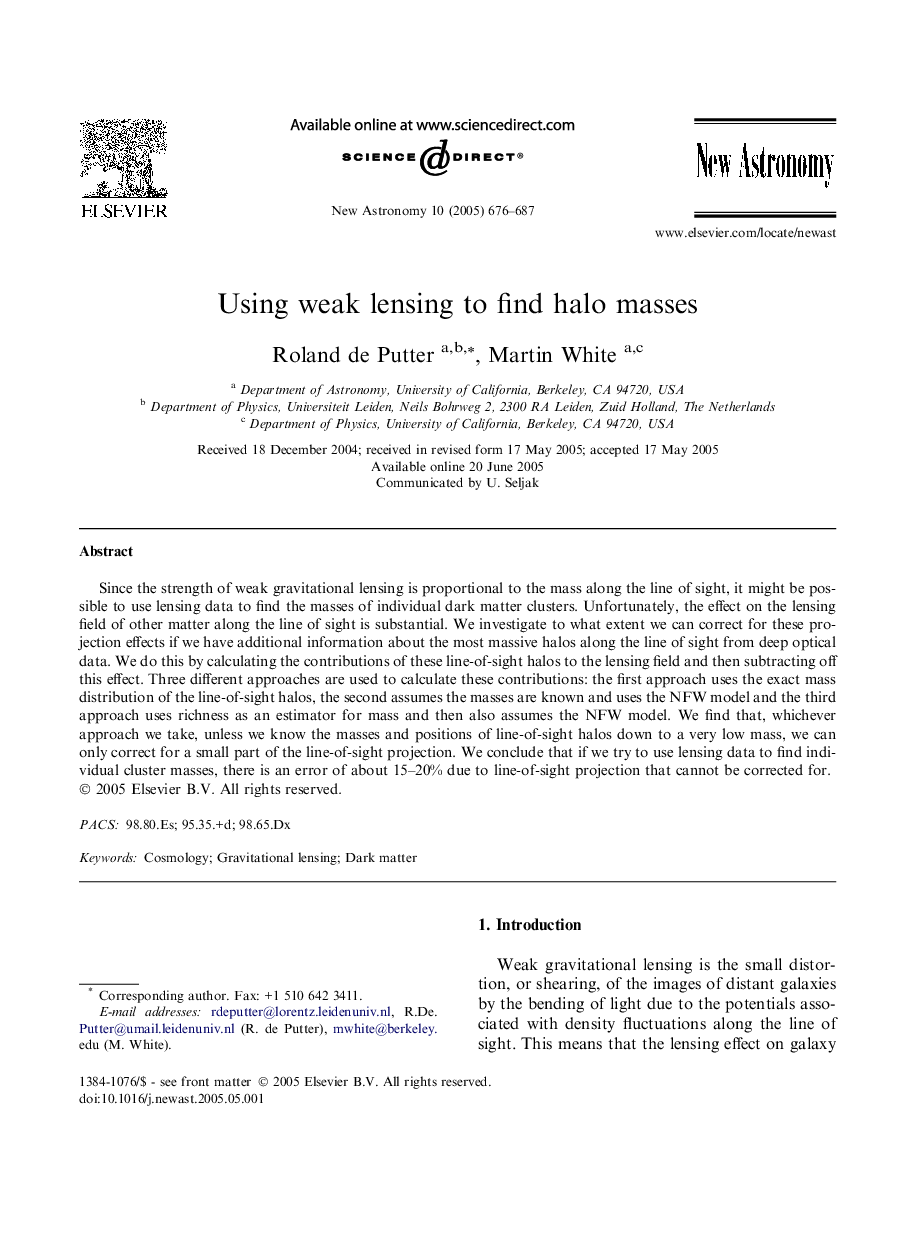| کد مقاله | کد نشریه | سال انتشار | مقاله انگلیسی | نسخه تمام متن |
|---|---|---|---|---|
| 9827958 | 1523760 | 2005 | 12 صفحه PDF | دانلود رایگان |
عنوان انگلیسی مقاله ISI
Using weak lensing to find halo masses
دانلود مقاله + سفارش ترجمه
دانلود مقاله ISI انگلیسی
رایگان برای ایرانیان
کلمات کلیدی
موضوعات مرتبط
مهندسی و علوم پایه
فیزیک و نجوم
نجوم و فیزیک نجومی
پیش نمایش صفحه اول مقاله

چکیده انگلیسی
Since the strength of weak gravitational lensing is proportional to the mass along the line of sight, it might be possible to use lensing data to find the masses of individual dark matter clusters. Unfortunately, the effect on the lensing field of other matter along the line of sight is substantial. We investigate to what extent we can correct for these projection effects if we have additional information about the most massive halos along the line of sight from deep optical data. We do this by calculating the contributions of these line-of-sight halos to the lensing field and then subtracting off this effect. Three different approaches are used to calculate these contributions: the first approach uses the exact mass distribution of the line-of-sight halos, the second assumes the masses are known and uses the NFW model and the third approach uses richness as an estimator for mass and then also assumes the NFW model. We find that, whichever approach we take, unless we know the masses and positions of line-of-sight halos down to a very low mass, we can only correct for a small part of the line-of-sight projection. We conclude that if we try to use lensing data to find individual cluster masses, there is an error of about 15-20% due to line-of-sight projection that cannot be corrected for.
ناشر
Database: Elsevier - ScienceDirect (ساینس دایرکت)
Journal: New Astronomy - Volume 10, Issue 8, August 2005, Pages 676-687
Journal: New Astronomy - Volume 10, Issue 8, August 2005, Pages 676-687
نویسندگان
Roland de Putter, Martin White,